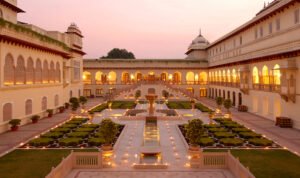Makar Sankranti is a vibrant harvest festival celebrated across India with immense joy and enthusiasm. It marks the transition of the Sun into the zodiac sign of Capricorn (Makara), signifying the end of the winter solstice and the beginning of longer, warmer days. Observed on January 14th each year, it is one of the few Hindu festivals based on the solar calendar, making its date almost constant.
A Celebration of the Sun and Abundance
Makar Sankranti holds deep astronomical and spiritual significance. It is believed to be the day when the Sun starts its northward journey (Uttarayan), symbolizing positivity, enlightenment, and spiritual growth. Farmers thank the Sun God for a bountiful harvest and seek blessings for future prosperity.
Kite Flying – A Sky Full of Colors
One of the most iconic aspects of Makar Sankranti is the kite-flying tradition, especially in states like Gujarat, Maharashtra, and Rajasthan. From rooftops to open fields, the skies burst into a kaleidoscope of colors as people of all ages fly kites in a playful competition. This act is not only fun but also symbolic of reaching towards higher aspirations and cutting negativity.
Special Foods & Customs
Each region celebrates Makar Sankranti in its unique style, but food remains a unifying joy. The festival is marked by preparing and sharing til (sesame) and jaggery (gur) sweets—such as tilgul laddoos, chikki, and pongal—which are symbolic of warmth, sweetness, and bonding.
In Maharashtra, people exchange tilgul saying “Tilgul ghya, god god bola” (Take sesame and jaggery, and speak sweetly).
In Punjab, the day before is celebrated as Lohri, with bonfires, traditional dances, and songs.
In South India, it’s known as Pongal, where people cook a special dish of the same name and thank the Sun God.
In Uttar Pradesh and Bihar, people take holy dips in rivers, especially in the Ganges, believing it cleanses sins and brings blessings.
Unity Through Diversity
Despite its regional variations, the essence of Makar Sankranti remains the same—gratitude, sharing, and harmony with nature. The festival beautifully captures the spirit of rural India, its strong ties to the land, and the joy of reaping what has been sown.
In Essence – Makar Sankranti is not just a festival—it’s a celebration of life, light, and new beginnings. Whether it’s flying kites under the golden sun, savoring sweets, or participating in community gatherings, the festival brings people together in joy and mutual respect.









